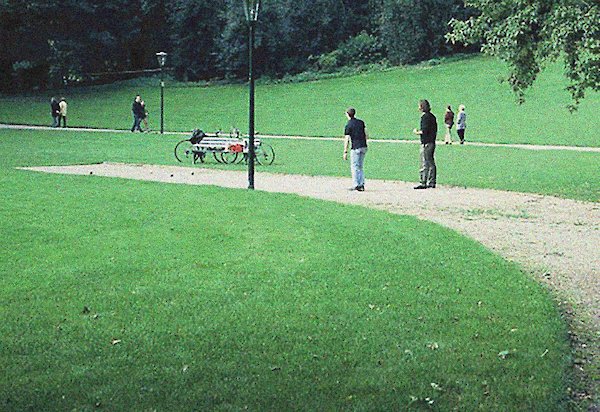Speakers
Véronique Faucher and Marc Pouzul
from atelier le balto, Berlin. As city planner (IFU Paris) and landscape architect (ENSP Versailles) by training, we work mainly on redefining and improving public and semi-public spaces in an urban environment. We try to recognize and understand their qualities, as well as to assess and show their potentials for improvement and appropriate transformation. The great majority of creations by our Berlin-based studio atelier le balto (foundation 2001) are gardens, places of communication and interaction.
Where is the Art of Gardening?
An unsettled question concerning our work and the practice in our contemporary world.
The atelier le balto has often been invited by cultural and artistic institutions to create a garden. It seems that our work has been noticed by art interested people; that gave us a position at the edge, between art and landscape architecture or between art and gardening ... For our part, it seems to us that we have developped an attitude which we believe to be simply one of a “paysagiste” (a “Landscape architecte”, you may find also “landscape gardener”) or one of a “jardiniste”, to use the word created by J.C.N. Forestier which unifies the words “jardinier” [gardener] and “artiste”.
The expression of “garden art” is nowadays more used by historians, the enthusiastic lovers of (historic) gardens. Nevertheless, it can be adopted into the practice of our profession. Brigitte Wormbs wrote: “... but still the question remains, what persuades garden art nowadays to a dialectic revision of its concept, does it intend, instead of giving way to each latest trend of pioneering performance, to unfold the poetic in the historical.” (Brigitte Wormbs, in “Capriccio oder nach den Regeln der Kunst”, Die Gartenkunst, Edition 1/1997)
With some examples we would like to present the different aspects we apply to the creation of a garden – our implements are our senses and our bodies, the steps and the distance; we use them to measure, to survey and give the area a scale, to discover and to sketch its characteristics, its topography, its light – we consider the plant as an actor therefore we stage it to be able to follow its development – we consider the visitor as an actor therefore we propose paths and places to pause through which he/she can participate in the garden.
